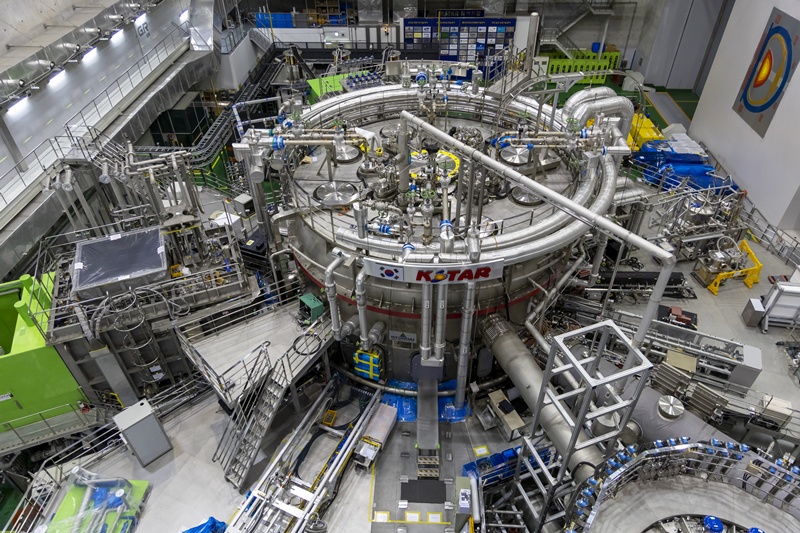- 한국어
- English
- 日本語
- 中文
- العربية
- Español
- Français
- Deutsch
- Pусский
- Tiếng Việt
- Indonesian

The reactor Korea Superconducting Tokamak Advanced Research, dubbed the "Korean artificial sun," was used in the joint study. (Yonhap News)
By Koh Hyunjeong
A joint research team with the U.S. has developed a core technology for commercializing nuclear fusion energy.
The Ministry of Science and ICT on Aug. 6 said the team from the Korea Institute of Fusion Energy and Princeton Plasma Physics Laboratory of the U.S. found a way to boost plasma operations, a crucial factor in the commercial application of nuclear fusion energy.
The study used the Korea Superconducting Tokamak Advanced Research, a high-tech reactor known as an "artificial sun."
The heat resistance of the device's inner wall must withstand ultra-high plasma temperatures exceeding 100 million degrees Celsius. Heat-resistant tungsten has recently attracted attention as a next-generation material for such a wall.
The problem is that the tungsten's impurities generated during operation can enter the plasma and negatively affect the device's operational stability and plasma performance. This is why controlling such impurities is a key challenge for the commercial application of fusion energy.
The team discovered that injecting boron powder reduced the impurities from the inner walls of a fusion reactor, a major development that could help secure plasma operation stability, which had been a technical hurdle.
The study was covered on July 25 in the international academic journal Nuclear Fusion.
Jung Taek-Ryeol, director-general of the ministry's Future Energy, Convergence and Public Mission R&D Policy Bureau, said, "We will actively support efforts to accelerate the materialization of nuclear fusion energy and the acquisition of core technologies that will enable us to play a leading role in future fusion research."
hjkoh@korea.kr